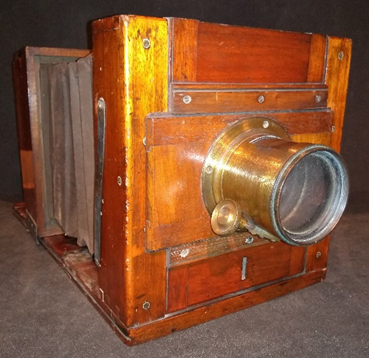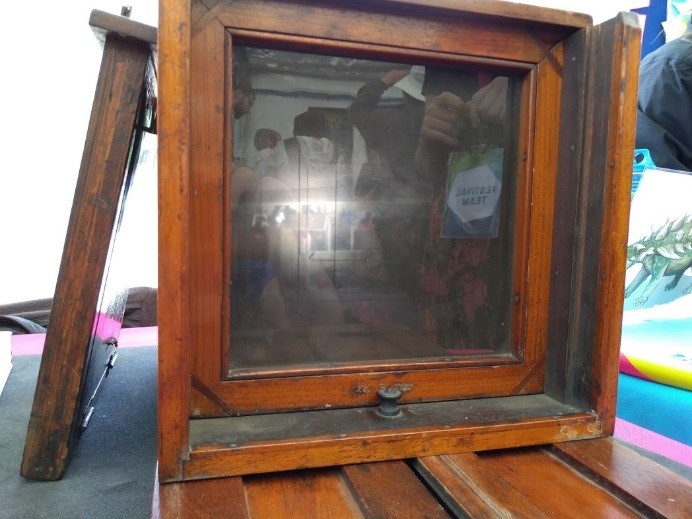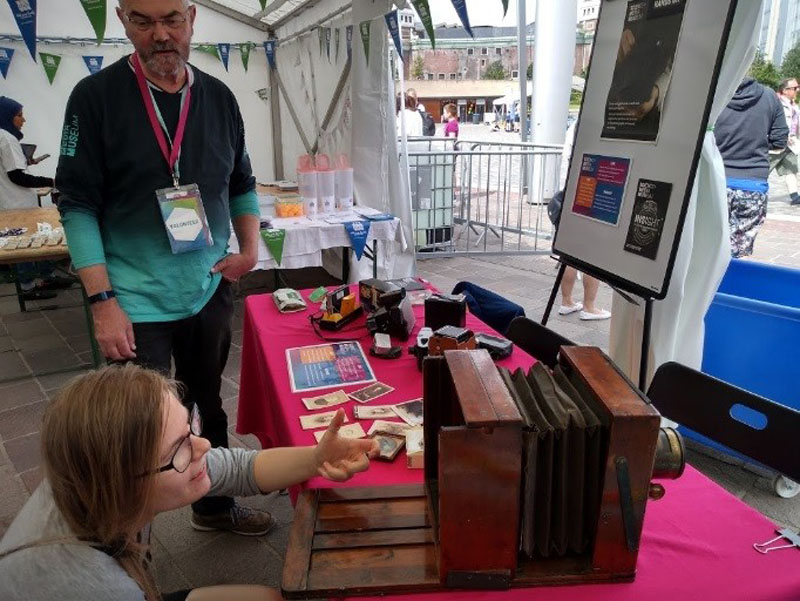Looking at a camera in a glass case is all very well, but if you are anything like me you want to pick them up and see for yourself how they work. But why do we normally keep the objects locked away, only to be handled by museum staff wearing gloves?
The most basic reason is to protect the objects from damage by the oils and dirt left behind by contact with our skin, which gradually erodes and degrades the materials. Yet touch forms a major part of our interaction with the world: the weight of an object, the texture and temperature of the materials are all things that are difficult to assess when we are restricted to just one of our senses.
To enable visitors to get hands-on with our collection, we have set up a new Handling Collection. This lets you enjoy the experience handling historic objects without putting them at risk. All the objects in this collection are authentic; they either mirror objects from our accessioned collection or highlight themes from our temporary exhibitions or activities.

One of the most popular cameras in the handling collection is the 19th century Bellows type camera (right), which would have used glass plate negatives to capture the image. This camera appears to be homemade and shows signs of having been adapted over time. It has a varnished wooden body with what appear to be canvas bellows and a brass by Darlot Opticien Lens made in Paris around the 1860s. This camera is in many ways similar to the Gandolfi Square Bellows Tailboard Camera from our accessioned collection (below).

While the camera shows signs of wear, it is still possible to get a good through the camera if there is enough light. As part of Bradford Science Festival we took several items from the Handling Collection, including this camera, out into City Park for festival attendees to try out.

One of the things you very quickly notice is how tricky it is to focus an image using the camera—not least due to the image appearing upside down!
Handling activities take place most weekends with the aid of our trained volunteers. So if you want to get hands-on with our collection, come along and have a go.

If you’re interested in volunteering at the museum, the Handling Collection also offers a brilliant opportunity to work with our collection and our visitors. Find out more on our volunteering page.